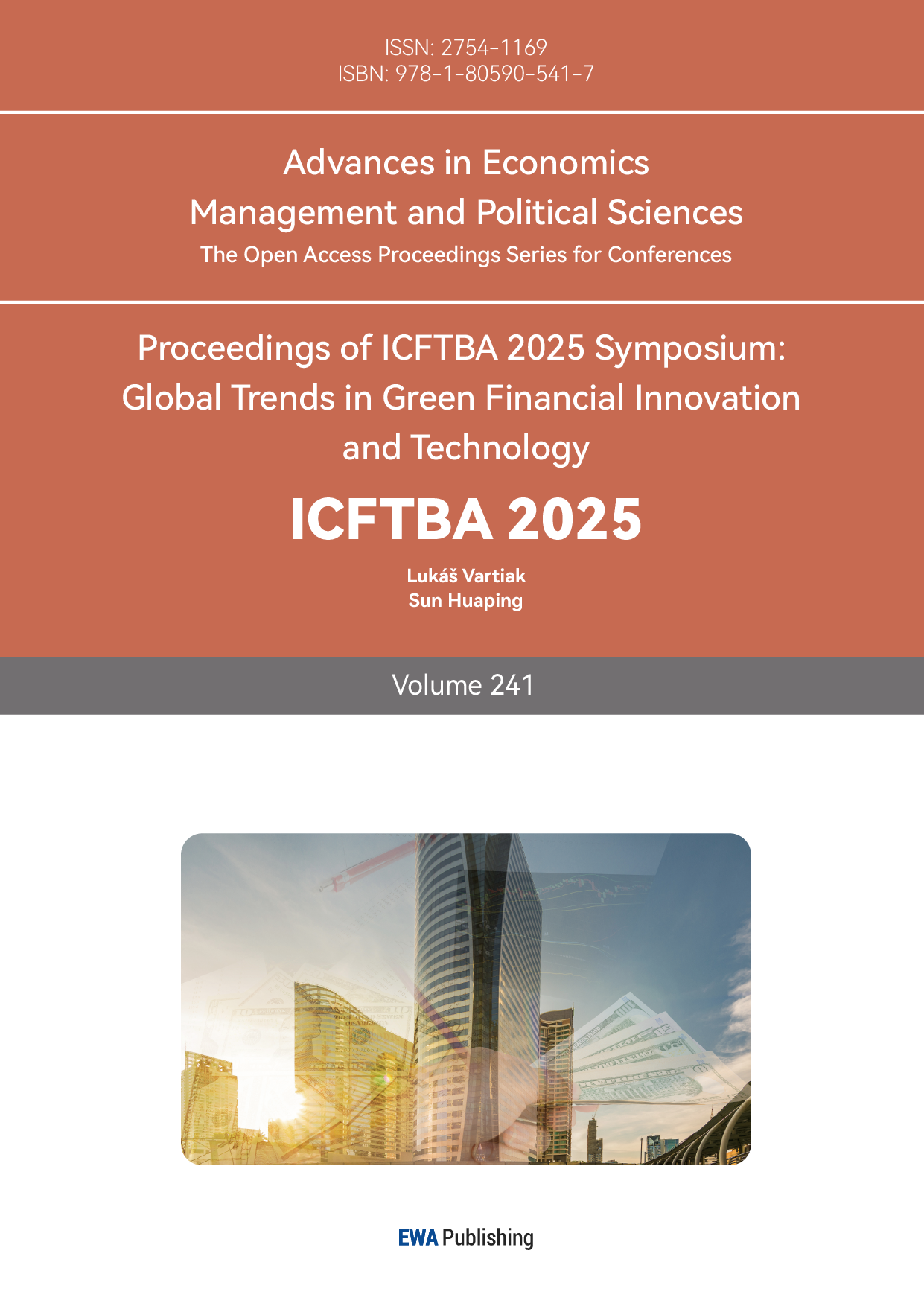References
[1]. JIN, L., & MYERS, S. (2006). R2 around the world: New theory and new tests☆. Journal of Financial Economics, 79(2), 257–292.
[2]. Hutton, A. P., Marcus, A. J., & Tehranian, H. (2009). Opaque financial reports, R2, and crash risk. Journal of Financial Economics, 94(1), 67–86.
[3]. Kousenidis, D. V., Ladas, A. C., & Negakis, C. I. (2014). Accounting conservatism quality of accounting information and crash risk of stock prices. The Journal of Economic Asymmetries, 11, 120–137. https: //doi.org/10.1016/j.jeca.2014.09.001
[4]. Xu, N., Yu, S., & Yi, Z. (2013). Institutional investors’ herding behavior and stock price crash risk. Journal of Management World. (7), 31–43.
[5]. Jiang, J., Qiu, J., Zhu, R., & Hu, H. (2020, March). Investor attention and stock price crash risk: Mitigation or aggravation? Securities Market Herald. 69-78.
[6]. Caldara, D., & Iacoviello, M. (2018). Measuring Geopolitical Risk. International Finance Discussion Paper, 2018(1222), 1–66.
[7]. Kim, J.-B., Li, Y., & Zhang, L. (2011). Corporate tax avoidance and stock price crash risk: Firm-level analysis. Journal of Financial Economics, 100(3), 639–662.
[8]. Ren, H., Xu, Y., & Wu, J. (2024). Controlling shareholders’ stock pledges and stock price crash risks. Finance Research Letters, 68, 105956. https: //doi.org/10.1016/j.frl.2024.105956
[9]. Tan, Q. M., Liu, N., & Dong, X. F. (2015). CEO power, property rights nature, and innovation performance. Journal of Harbin Institute of Technology (Social Sciences Edition), 17(3), 126–134. https: //doi.org/10.16822/j.cnki.hitskb.2015.03.017
[10]. Onali, E., Galiakhmetova, R., Molyneux, P., & Torluccio, G. (2016). CEO power, government monitoring, and bank dividends. Journal of Financial Intermediation, 27, 89–117. https: //doi.org/10.1016/j.jfi.2015.08.001
[11]. Shi, H. B., & Yang, D. (2017). The impact of CEO power allocation on enterprise ambidextrous innovation. Soft Science, 31(11), 49–51, 61. https: //doi.org/10.13956/j.ss.1001-8409.2017.11.11
[12]. Shao, Y. H., Ding, Q., & Bao, Q. (2022). CEO power intensity and enterprise ambidextrous innovation investment decisions: Moderating effects of marketization level and internal control. Science & Technology Progress and Policy, 39(4), 131–140.
[13]. Zhang, W. J., Li, K., & Wang, S. M. (2018). The internal mechanism of board capital on corporate innovation under the moderating role of CEO power. Management Review, 30(4), 70–82. https: //doi.org/10.14120/j.cnki.cn11-5057/f.2018.04.007
[14]. Wang, N., He, J., & Huang, J. (2017). The impact of board capital and CEO power on R& D investment: Evidence from GEM listed companies. Commercial Research, (1), 108–117. https: //doi.org/10.13902/j.cnki.syyj.2017.01.014
[15]. Zhou, J., Jin, Y. Y., & Yuan, D. L. (2013). The impact of board human capital and CEO power on enterprise R&D investment: Empirical evidence from high-tech listed companies in Shanghai and Shenzhen. Science of Science and Management of S.& T., 34(3), 170–180.
[16]. Liu, J. M., & Zhou, S. (2018). The impact of R&D innovation investment on GEM enterprise performance from the perspective of CEO power. Journal of Southwest University of Political Science & Law, 20(3), 118–126.
[17]. Morse, A., Nanda, V. K., & Seru, A. (2008). Are incentive contracts rigged by powerful ceos? SSRN Electronic Journal. https: //doi.org/10.2139/ssrn.687504
[18]. KHANNA, V., KIM, E. H., & LU, Y. (2015). CEO connectedness and corporate fraud. The Journal of Finance, 70(3), 1203–1252. https: //doi.org/10.1111/jofi.12243
[19]. Al Mamun, M., Balachandran, B., & Duong, H. N. (2020). Powerful CEOs and stock price crash risk. Journal of Corporate Finance, 62, 101582. https: //doi.org/10.1016/j.jcorpfin.2020.101582
[20]. Zheng, Z., Li, D., Zhong, T., Wang, T, & He, L. (2023). CEO facial structure and stock pricecrash risk, Accounting & Finance, 63(S1), 873-905. https: //doi.org/10.1111/acfi.13069
[21]. Ma, D., & Wu, W. (2024). Experience as a double-edged sword: CEO experience and power on breakthrough innovation. Management Decision. https: //doi.org/10.1108/md-12-2023-2268
[22]. Xu, L., Rao, Y., Cheng, Y., & Wang, J. (2020). Internal coalition and stock price crash risk. Journal of Corporate Finance, 64, 101640. https: //doi.org/10.1016/j.jcorpfin.2020.101640
[23]. Zhao, T., Wei, H., & Li, H. (2022). CEO characteristics and stock price crash risk warning. Journal of Fujian Business University, 42–49. CNKI. https: //doi.org/10.19473/j.cnki.1008-4940.2022.05.006
[24]. Saiyed, A. A., Tatoglu, E., Ali, S., & Dutta, D. K. (2023). Entrepreneurial orientation, CEO power and firm performance: An upper echelons theory perspective. Management Decision, 61(6). https: //doi.org/10.1108/md-05-2022-0641
[25]. Hu, J. (2009). “One control many” companies: Empirical analysis and theoretical explanation. Securities Market Herald, 8, 51–58.
[26]. La Porta, R., Lopez de Silanes, F., & Shleifer, A. (1998). Corporate ownership around the world. SSRN Electronic Journal, 54(2). https: //doi.org/10.2139/ssrn.103130
[27]. Cao, Y. (2025). Managerial power, bad news withholding and stock price crash risk. CNKI. https: //doi.org/10.27660/d.cnki.gzczu.2023.000605
[28]. Abadie, A., & Imbens, G. W. (2016). Matching on the estimated propensity score. Econometrica, 84(2), 781–807. https: //doi.org/10.3982/ecta11293



